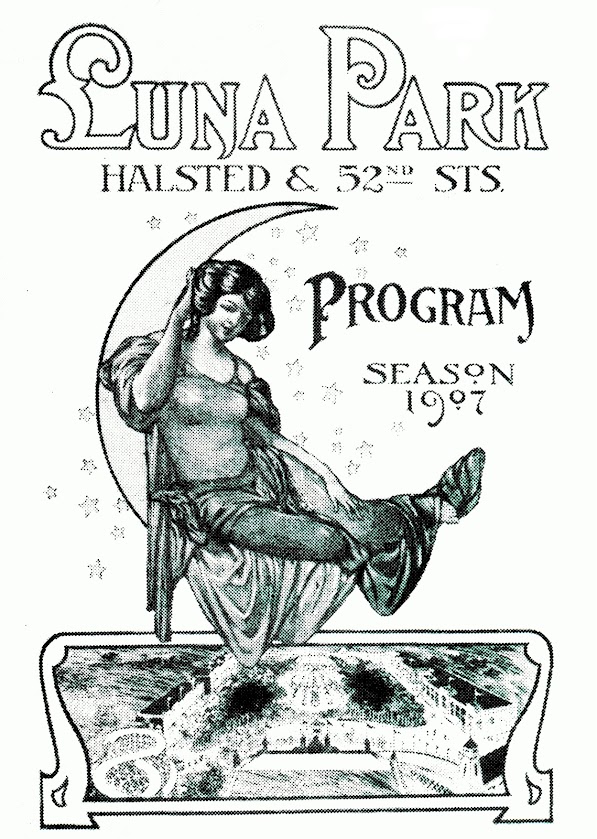
Attractions included a midway with a small roller coaster, a merry-go-round and other mechanical rides, a ballroom, a roller skating rink, live entertainment which included Vaudeville and Boxing matches, a restaurant, numerous games of chance, and souvenir stands.
Initially popular (averaging 5,000 patrons a day in its peak), attendance declined in light of the increasing competition from other Chicago-area amusement parks.
 |
| June 1908 |
Luna Park's proximity to the Union Stock Yards and the smell that arose from the yards, especially on hot summer days, may have quickened its demise.
In 1912, most of the attractions were removed; the remaining structures were converted into a large food market hall. In 1916, the grounds were sold to real estate developer James H. Milligan to focus on building single-family houses.
Compiled by Dr. Neil Gale, Ph.D.
[1] Trolley parks, which started in the 19th century, were picnic and recreation areas along or at the ends of streetcar lines in most of the larger cities. These were precursors to amusement parks. These trolley parks were created by the streetcar companies to give people a reason to use their services on weekends.


This is the first time I seen this park, My husband Edward is the son of Big Jims Son James O'Leary his daughters name was Anna Francis O'Leary (Monreal). She passed away after a house fire. I have a match case with LUNA on the front . My husband's aunt Geraldine had some things she let him after her death.
ReplyDelete